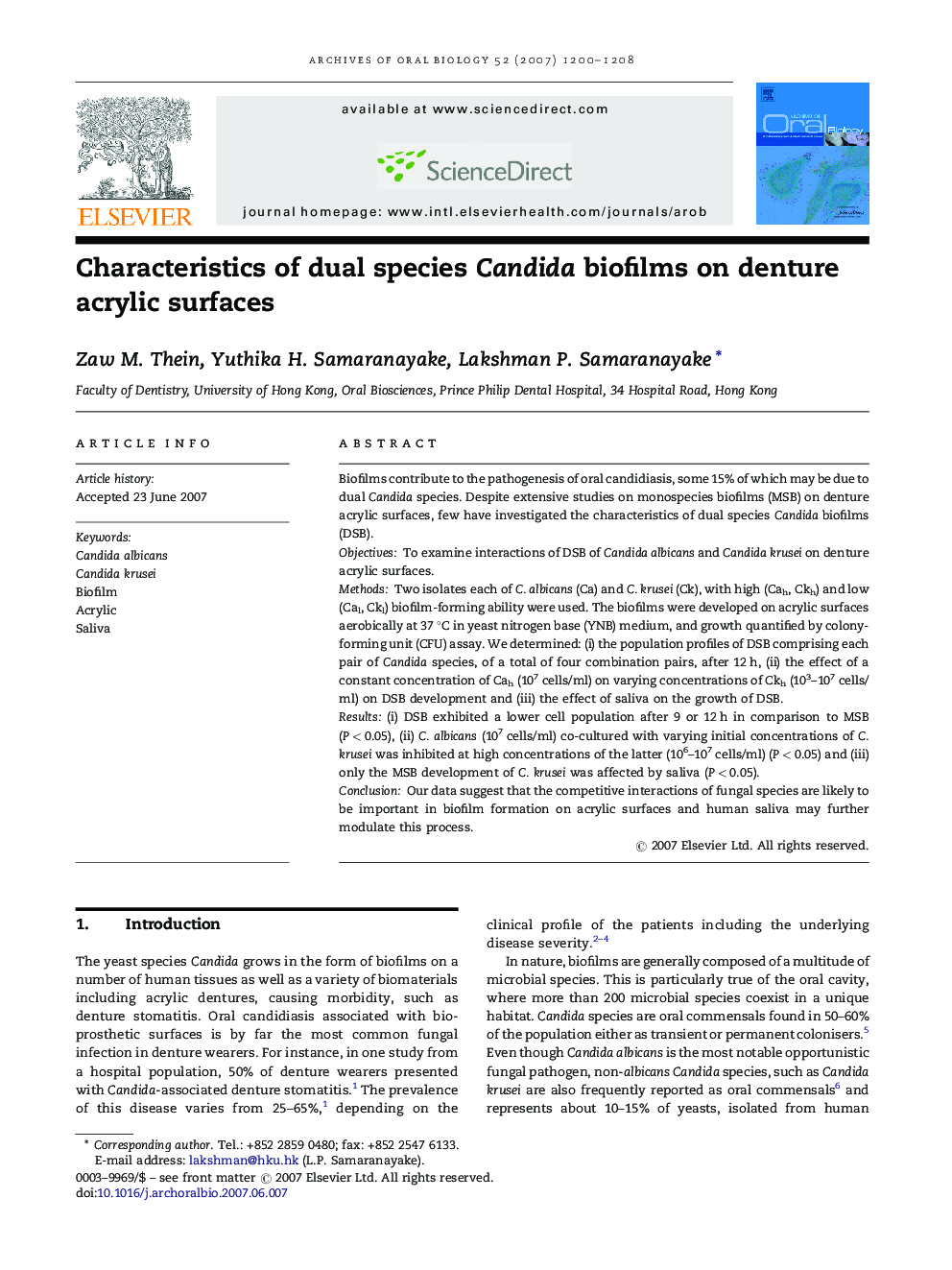| Article ID | Journal | Published Year | Pages | File Type |
|---|---|---|---|---|
| 3121845 | Archives of Oral Biology | 2007 | 9 Pages |
Biofilms contribute to the pathogenesis of oral candidiasis, some 15% of which may be due to dual Candida species. Despite extensive studies on monospecies biofilms (MSB) on denture acrylic surfaces, few have investigated the characteristics of dual species Candida biofilms (DSB).ObjectivesTo examine interactions of DSB of Candida albicans and Candida krusei on denture acrylic surfaces.MethodsTwo isolates each of C. albicans (Ca) and C. krusei (Ck), with high (Cah, Ckh) and low (Cal, Ckl) biofilm-forming ability were used. The biofilms were developed on acrylic surfaces aerobically at 37 °C in yeast nitrogen base (YNB) medium, and growth quantified by colony-forming unit (CFU) assay. We determined: (i) the population profiles of DSB comprising each pair of Candida species, of a total of four combination pairs, after 12 h, (ii) the effect of a constant concentration of Cah (107 cells/ml) on varying concentrations of Ckh (103–107 cells/ml) on DSB development and (iii) the effect of saliva on the growth of DSB.Results(i) DSB exhibited a lower cell population after 9 or 12 h in comparison to MSB (P < 0.05), (ii) C. albicans (107 cells/ml) co-cultured with varying initial concentrations of C. krusei was inhibited at high concentrations of the latter (106–107 cells/ml) (P < 0.05) and (iii) only the MSB development of C. krusei was affected by saliva (P < 0.05).ConclusionOur data suggest that the competitive interactions of fungal species are likely to be important in biofilm formation on acrylic surfaces and human saliva may further modulate this process.
